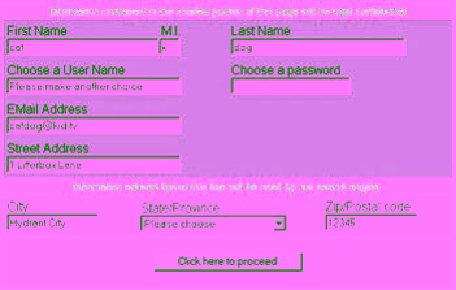Java Reference
In-Depth Information
Figure 13-2:
Member-registration form with user data restored and error message displayed for
user name
Using Stored Procedures with Input and Output Paramete rs
In addition to supplying input parameters to a stored procedure, you can get output parameters from a
stored procedure. If you decide to use an output parameter, it must be registered as an
OUT
parameter
using the
CallableStatement.registerOutParameter()
method before the execute method is
called. Here's an example:
cstmt.registerOutParameter(1, java.sql.Types.VARCHAR);
OUT
parameter values can be retrieved after execution using get methods appropriate to the data types
of the values. Because of limitations some relational database management systems impose, all of the
results the execution generates of a
CallableStatement
object should be retrieved before
OUT
parameters are retrieved.
Listing 13-9
gives an example of a simple stored procedure that checks a user name and password
against the database, returning the
String
"PASS" if a match is found or "FAIL" otherwise.
Listing 13-9: Using an output parameter with a stored procedure
CREATE PROCEDURE CHECK_USER_NAME
@UserName varchar(30),
@Password varchar(20),
@PassFail varchar(20) OUTPUT
As
IF EXISTS(Select * From Login
Where UserName = @UserName
And
Password = @Password)
SELECT @PassFail = 'PASS'
else
SELECT @PassFail = 'FAIL';
Note
Stored procedures can contain more than one SQL statement, in which case they
produce multiple results, and the
execute
method should be used. In cases where a
CallableStatement
object returns multiple
ResultSet
objects, all of the results
should be retrieved using the method
getMoreResults
before
OUT
parameters are
retrieved.





